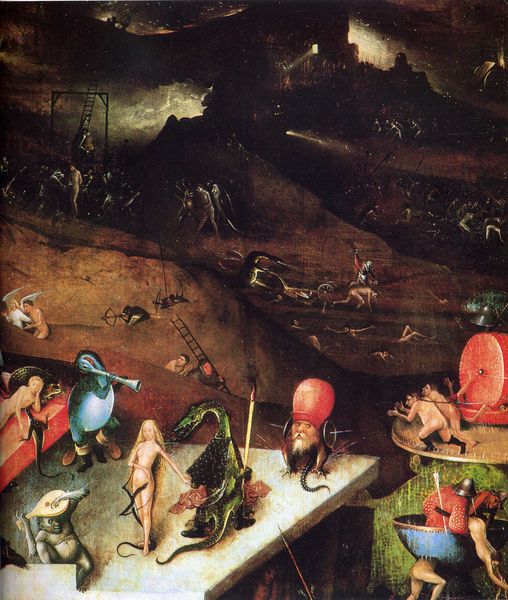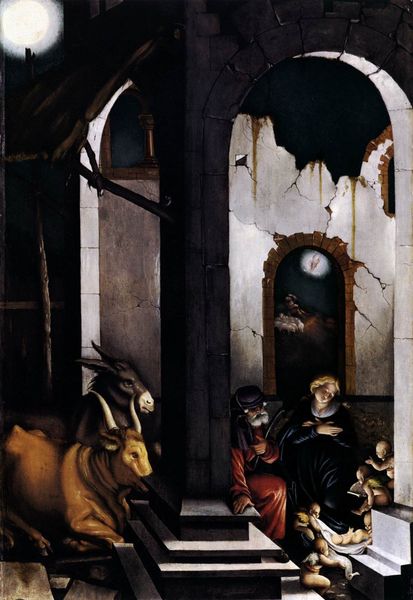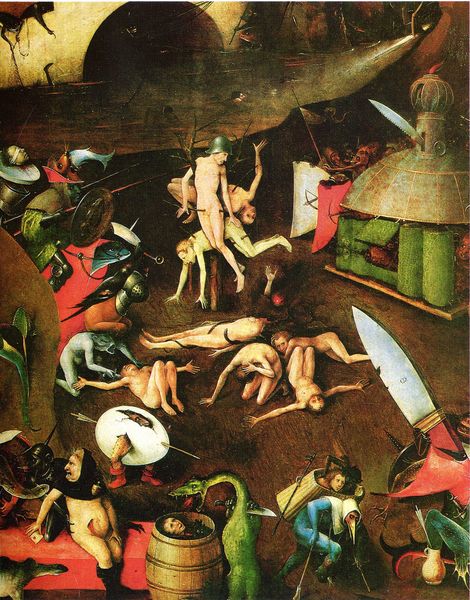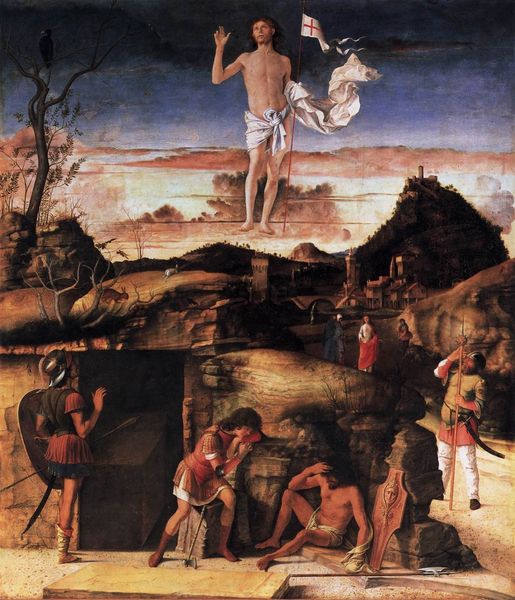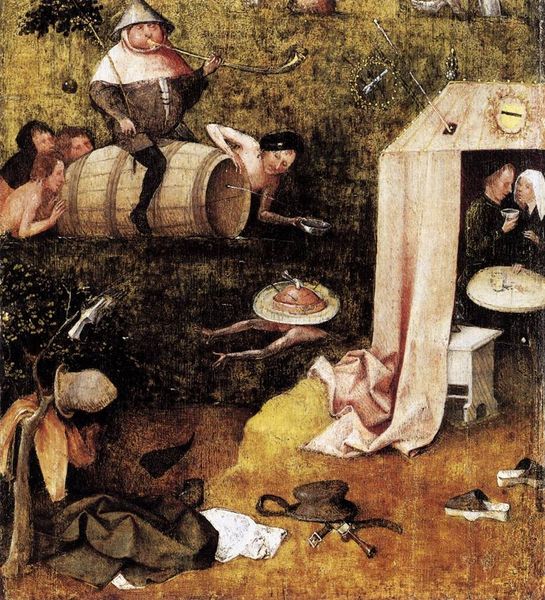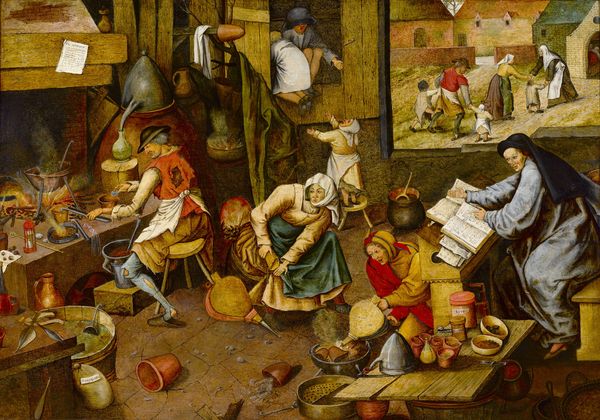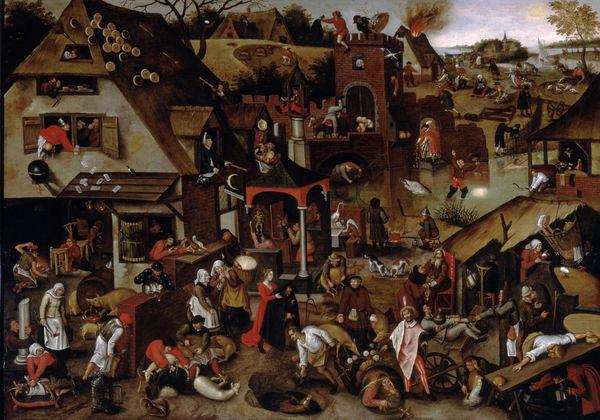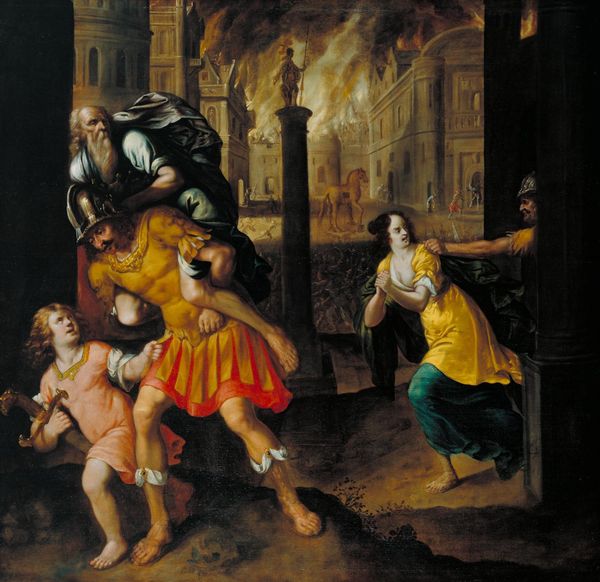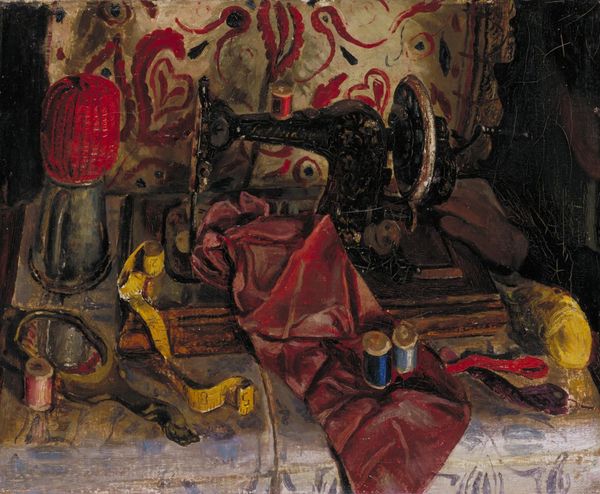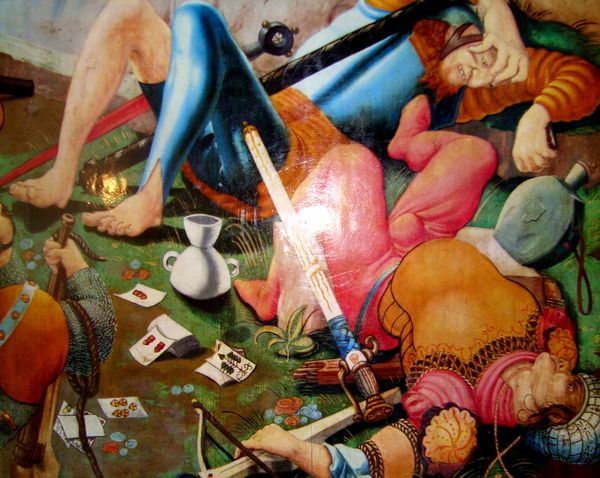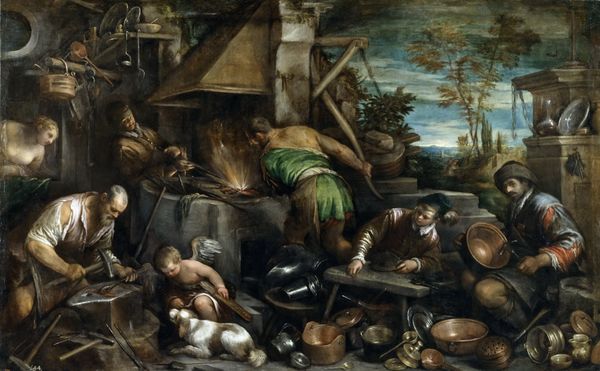
Copyright: Public domain
This detail from Hieronymus Bosch’s “The Last Judgement,” made with oil paint on wood panel, plunges us into a meticulously rendered vision of hell. Bosch's mastery is evident in his ability to translate fantastical visions into tangible forms. The density of the oil paint allows him to build up layers of detail, creating a hallucinatory effect. Consider the hybrid creatures, part-human, part-animal, seemingly engaged in ghastly routines. Each element—the glint of metal armor, the texture of rotting flesh, the bubbling cauldrons—is rendered with equal attention. We see the influence of Northern Renaissance painting traditions, specifically the use of oil paint to create depth and luminosity. The sheer amount of work involved in producing this painting is staggering. Bosch’s attention to detail transforms the religious subject into a commentary on the endless cycle of sin and punishment. By focusing on the materiality and making of “The Last Judgement,” we can better understand how Bosch used the materials and techniques to create an unforgettable vision of damnation.
Comments
No comments
Be the first to comment and join the conversation on the ultimate creative platform.
